Noninvasive assessment of gut function using transcriptional recording sentinel cells
- PMID: 35549411
- PMCID: PMC11163514
- DOI: 10.1126/science.abm6038
Noninvasive assessment of gut function using transcriptional recording sentinel cells
Abstract
Transcriptional recording by CRISPR spacer acquisition from RNA endows engineered Escherichia coli with synthetic memory, which through Record-seq reveals transcriptome-scale records. Microbial sentinels that traverse the gastrointestinal tract capture a wide range of genes and pathways that describe interactions with the host, including quantitative shifts in the molecular environment that result from alterations in the host diet, induced inflammation, and microbiome complexity. We demonstrate multiplexed recording using barcoded CRISPR arrays, enabling the reconstruction of transcriptional histories of isogenic bacterial strains in vivo. Record-seq therefore provides a scalable, noninvasive platform for interrogating intestinal and microbial physiology throughout the length of the intestine without manipulations to host physiology and can determine how single microbial genetic differences alter the way in which the microbe adapts to the host intestinal environment.
Conflict of interest statement
Figures

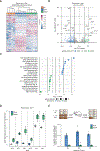
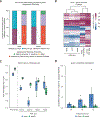
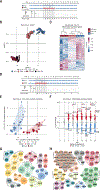
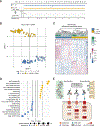
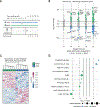

Comment in
-
Recording bacterial responses to changes in the gut environment.Science. 2022 May 13;376(6594):697-698. doi: 10.1126/science.abq1455. Epub 2022 May 12. Science. 2022. PMID: 35549434 Free PMC article.
-
Gut bacteria go on record.Nat Rev Gastroenterol Hepatol. 2022 Sep;19(9):557-558. doi: 10.1038/s41575-022-00653-3. Nat Rev Gastroenterol Hepatol. 2022. PMID: 35764720 No abstract available.
-
What if Bacteria Could Tell Us What They Have Seen?CRISPR J. 2022 Aug;5(4):488-489. doi: 10.1089/crispr.2022.29151.bik. CRISPR J. 2022. PMID: 35972365 No abstract available.
Similar articles
-
Recording transcriptional histories using Record-seq.Nat Protoc. 2020 Feb;15(2):513-539. doi: 10.1038/s41596-019-0253-4. Epub 2020 Jan 10. Nat Protoc. 2020. PMID: 31925399
-
Recording bacterial responses to changes in the gut environment.Science. 2022 May 13;376(6594):697-698. doi: 10.1126/science.abq1455. Epub 2022 May 12. Science. 2022. PMID: 35549434 Free PMC article.
-
Transcriptional recording by CRISPR spacer acquisition from RNA.Nature. 2018 Oct;562(7727):380-385. doi: 10.1038/s41586-018-0569-1. Epub 2018 Oct 3. Nature. 2018. PMID: 30283135
-
Decoding the microbiome: advances in genetic manipulation for gut bacteria.Trends Microbiol. 2023 Nov;31(11):1143-1161. doi: 10.1016/j.tim.2023.05.007. Epub 2023 Jun 30. Trends Microbiol. 2023. PMID: 37394299 Review.
-
Human Gut Microbiome: Function Matters.Trends Microbiol. 2018 Jul;26(7):563-574. doi: 10.1016/j.tim.2017.11.002. Epub 2017 Nov 22. Trends Microbiol. 2018. PMID: 29173869 Review.
Cited by
-
Molecular Time Capsules Enable Transcriptomic Recording in Living Cells.bioRxiv [Preprint]. 2023 Oct 16:2023.10.12.562053. doi: 10.1101/2023.10.12.562053. bioRxiv. 2023. PMID: 37905077 Free PMC article. Preprint.
-
Histones direct site-specific CRISPR spacer acquisition in model archaeon.Nat Microbiol. 2023 Sep;8(9):1682-1694. doi: 10.1038/s41564-023-01446-3. Epub 2023 Aug 7. Nat Microbiol. 2023. PMID: 37550505 Free PMC article.
-
Information storage across a microbial community using universal RNA barcoding.Nat Biotechnol. 2025 Mar 18. doi: 10.1038/s41587-025-02593-0. Online ahead of print. Nat Biotechnol. 2025. PMID: 40102641
-
Intestinal pH: a major driver of human gut microbiota composition and metabolism.Nat Rev Gastroenterol Hepatol. 2025 Sep;22(9):639-656. doi: 10.1038/s41575-025-01092-6. Epub 2025 Jul 2. Nat Rev Gastroenterol Hepatol. 2025. PMID: 40603778 Review.
-
An engineered bacterial symbiont allows noninvasive biosensing of the honey bee gut environment.PLoS Biol. 2024 Mar 5;22(3):e3002523. doi: 10.1371/journal.pbio.3002523. eCollection 2024 Mar. PLoS Biol. 2024. PMID: 38442124 Free PMC article.
References
-
- Schmidt F, Platt RJ, Applications of CRISPR-Cas for synthetic biology and genetic recording. Curr. Opin. Syst. Biol. 5, 9–15 (2017). doi: 10.1016/j.coisb.2017.05.008 - DOI
MeSH terms
Grants and funding
LinkOut - more resources
Full Text Sources
Research Materials

